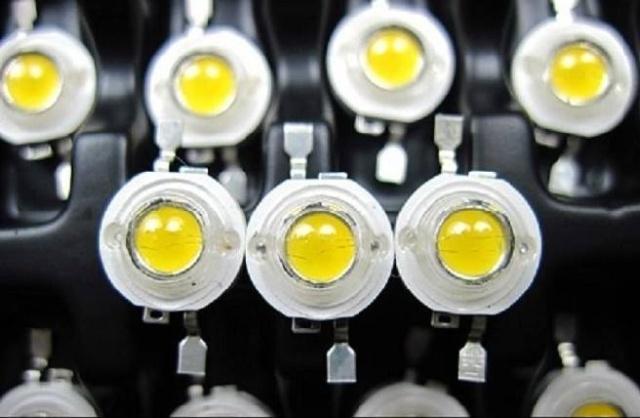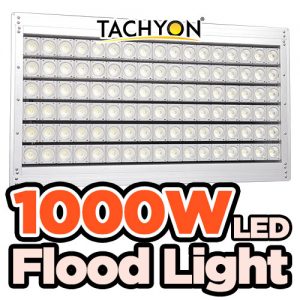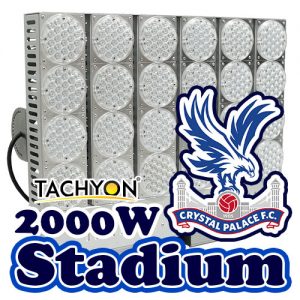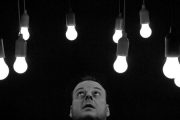Reasons for the long service life of LED lights:
Now the service life of LED lights can reach more than 100,000 hours, which can be described as “one-time-for-all” for ordinary household lighting. However, the life span of LED lights is not absolute, and it will also be affected by the environment and materials during use. However, the LED uses a highly reliable advanced packaging process-eutectic welding, so the life of the LED lamp is much longer than other lamps.
- The LED is a solid cold light source, encapsulated by epoxy resin, anti-vibration, and there is no loose part in the lamp body. There are no shortcomings such as easy burning, thermal deposition and light decay of the filament. The service life can reach 60,000 to 100,000 hours. It is more than 10 times the service life of traditional light sources. The LED performance is stable and can work normally under the environment of -30~+50°C.
- High-power LED flat cluster packaging, and integrated design of heat sink and lamp holder. It fully guarantees the heat dissipation requirements and service life of the LED, and fundamentally meets the arbitrary design of the structure and shape of the LED lamp, which has the distinctive characteristics of the LED lamp.
- Impact resistance, strong lightning resistance, no ultraviolet (UV) and infrared (IR) radiation. There is no filament and glass shell, there is no broken problem of traditional lamp tube, no harm to human body, no radiation.

Features of LED lights
- Energy saving: the energy consumption of white LED is only 1/10 of that of incandescent lamps and 1/4 of that of energy-saving lamps.
- Longevity: The life span can reach more than 100,000 hours, which can be described as “one-time-for-all” for ordinary household lighting.
- It can work at high speed: if the energy-saving lamp is frequently turned on or off, the filament will turn black and quickly break down, so it is safer.
- Solid-state packaging, which belongs to the type of cold light source. So it is easy to transport and install, and can be installed in any miniature and enclosed equipment without fear of vibration.
- LED technology is advancing with each passing day, its luminous efficiency is making amazing breakthroughs, and the price is constantly decreasing. The era of white LEDs entering the home is rapidly approaching.
- Environmental protection, no harmful substances of mercury. The assembly parts of the LED bulb can be easily disassembled, and can be recycled by others without recycling by the manufacturer.
- Light distribution technology expands the LED point light source into a surface light source, enlarges the light-emitting surface, eliminates glare, sublimates visual effects, and eliminates visual fatigue.
- Integrated design of lens and lampshade. The lens has the functions of concentrating and protecting at the same time, avoiding the repeated waste of light and making the product more concise and beautiful.

- High-power LED flat cluster packaging, and integrated design of radiator and lamp holder. It fully guarantees the heat dissipation requirements and service life of the LED, and fundamentally meets the arbitrary design of the structure and shape of the LED lamp, which has the distinctive characteristics of the LED lamp.
- Significant energy saving. Using ultra-bright and high-power LED light source, with high-efficiency power supply, it can save more than 80% of electricity than traditional incandescent lamps, and the brightness is 10 times that of incandescent lamps under the same power.
- Ultra-long life of more than 50,000 hours, which is more than 50 times that of traditional tungsten filament lamps. The LED adopts a highly reliable advanced packaging process-eutectic welding, which fully guarantees the long life of the LED.
- No flicker. Pure DC work eliminates visual fatigue caused by traditional light source strobe.
- Green and environmental protection. It does not contain lead, mercury and other polluting elements and does not pollute the environment.
- Impact resistance, strong lightning resistance, no ultraviolet (UV) and infrared (IR) radiation. There is no filament and glass shell, there is no broken problem of traditional lamp tube, no harm to human body, no radiation.
- Work under low thermal voltage, safe and reliable. Surface temperature≤60℃ (when ambient temperature Ta=25℃).
- Wide voltage range, universal LED light. 85V~264VAC full voltage range and constant current, to ensure that the life and brightness are not affected by voltage fluctuations.
- Using PWM constant current technology, high efficiency, low heat and high precision of constant current.
- Reduce line loss and no pollution to the power grid. The power factor is ≥0.9, the harmonic distortion is ≤20%, and the EMI conforms to the global index, which reduces the power loss of the power supply line and avoids high-frequency interference and pollution to the power grid.
- The universal standard lamp holder can directly replace the existing halogen lamp, incandescent lamp and fluorescent lamp.
- The luminous visual efficiency rate can be as high as 80lm/w, a variety of LED lamp color temperatures are available, high color rendering index, and good color rendering.

Obviously, as long as the cost of LED lights decreases with the continuous improvement of LED technology. Energy-saving lamps and incandescent lamps will inevitably be replaced by LED lamps.
Countries all over the world are paying more and more attention to lighting energy saving and environmental protection issues, and they have been vigorously promoting the use of LED lamps.
Will the blue light of LED light damage the eyes?
Blue photons have high energy and can excite fluorescence. Generally, the blue light of the blue LED is used to hit the phosphor to produce yellow light. After the yellow light is excited by the blue light, they are emitted from the LED together. We feel that we see white light. In fact, this is just a mixture of blue and yellow. Compound light.
The invention of the blue LED allowed humans to use LEDs to produce sufficiently bright white light. The efficiency of white-emitting LEDs is much higher than that of incandescent lamps. White LEDs contributed to the invention of various LED display screens, and also promoted the improvement of lighting efficiency. In particular, the latter makes it possible for mankind to reduce carbon emissions and fight climate change.
Short-wave blue light is light with a relatively high energy wavelength between 400nm and 480nm. Blue light in this wavelength will increase the amount of toxins in the macular area of the eye, which seriously threatens the health of our eye fundus. Blue light induces blindness, and the most effective solution at present is to film the TV. The anti-blue light film technology is very mature, and the cost is very low, which can effectively prevent blue light from penetrating.
Here, it is particularly pointed out that blue light is not all harmful blue light. The really harmful blue light is the blue light within the wavelength range of 400 to 450, and the blue light between 480 to 500 nanometers has the effect of adjusting biological rhythms, such as sleep, mood, memory, etc. They are all related to it, but they are beneficial to the human body. And whether short-wave blue light will definitely cause damage to the human eyes, this is related to the intensity of the irradiation and the irradiation time. When the illuminance reaches a certain level and lasts for more than two hours, it may damage the retina.
The tissue in the human eye that receives light is called the retina. If the 400-500 nm blue light band in the light source is too bright, the eye may cause photochemical damage to the retina after looking directly at the light source for a long time. This kind of damage is mainly divided into two types: damage caused by the direct reaction of blue light with the visual pigment in the visual photoreceptor cells, and damage caused by the reaction of blue light with the lipofuscin in the retinal pigment epithelial cells.
After the visible light is focused in the eye, the focal points are different, and there will be a focal distance difference between the two focal points. This is the main cause of blurred vision. Long-term visual fatigue can cause other symptoms of fatigue. The introduction of blue light will aggravate the focal distance difference and visual blur. It is because after the blue light is focused, the focus does not fall on the retina, but falls between the retina and the lens. Increase the focal distance difference of the light in the eye.







